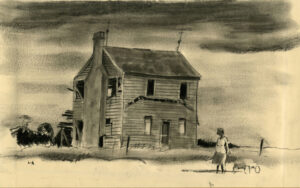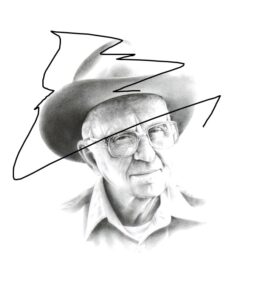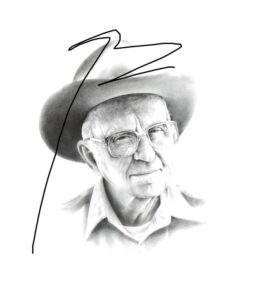Of Days Long Past by Harry Leith-Ross

A new exhibit featuring highly-detailed drawings and watercolors by Harry Leith-Ross (1886-1973), entitled Harry Leith-Ross: Scenes from Country Life, opened on August 10th. The exhibit illuminates the painter’s artistic process and skilled draftsmanship. He masterfully manipulated black conté crayon to achieve a variety of textures, dramatic contrasts, and bright highlights. Depicting Holland, Scotland, Nova Scotia, New Hope, and Doylestown, among other locations, these works map Leith-Ross’s extensive travels and encapsulate an intimate vision of everyday life in rural and small town settings. Leith-Ross made drawings as finished works and used them as studies for his larger oil paintings. A few drawings even include the artist’s handwritten color notes to guide him when executing paintings in his studio.

Born in 1886 in the former British colony of Mauritius, Harry Leith-Ross grew up in Scotland and England. He showed an interest in drawing from a young age; always carrying his sketchbook and pencil with him. He took every opportunity to “practice with line and color”.
He came to the United States at the invitation of an uncle in 1903. After working as a commercial artist and studying painting in Paris, he enrolled in the Art Students League’s summer school at Woodstock, New York in 1913 and began exhibiting in New York and Philadelphia.
He first visited New Hope in the summer of 1914 to paint and made several return trips to visit artist friends, most notably John F. Folinsbee whom he met when the two were students in Woodstock. Leith-Ross settled permanently in New Hope in 1935 with his wife Emily, when he temporarily took over teaching duties for Folinsbee, who was summering in Maine. In the ensuing years, the artist would become an integral part of the New Hope art community. He lived and worked here until his death in 1973.

Leith-Ross became renowned for his vibrant, carefully composed oil paintings, and for his transparent watercolor technique in the tradition of the eighteenth-century. He gained recognition for depicting humble genre scenes of rural life and finding beauty in the everyday activities of people. He preferred to paint scenes with long shadows of early morning or late evening, as it provided opportunities to repeat patterns of light. Painting on gray days was much more interesting from a color standpoint because colors were muted and therefore harmonious. In his works the people or structures seemed lonely (similar to Edward Hopper) or uncomfortable intruders in landscape. His light sources produced raking lines and angles, adding visual interest in geometric patterns.
Take a look at the three different versions of Of Days Long Past. You will find Study for Of Days Long Past (above) and on display in the exhibit Harry Leith-Ross: Scenes from Country Life. You can see the final work in oil, Of Days Long Past (c. 1959), displayed in the Museum’s Putnam Smith Gallery (above right). The watercolor version can be seen in the photo below. How has the image changed in each version? How is it the same? Which one is your favorite? Why?

Harry Leith-Ross: Scenes from Country Life will be open until February 9, 2020.